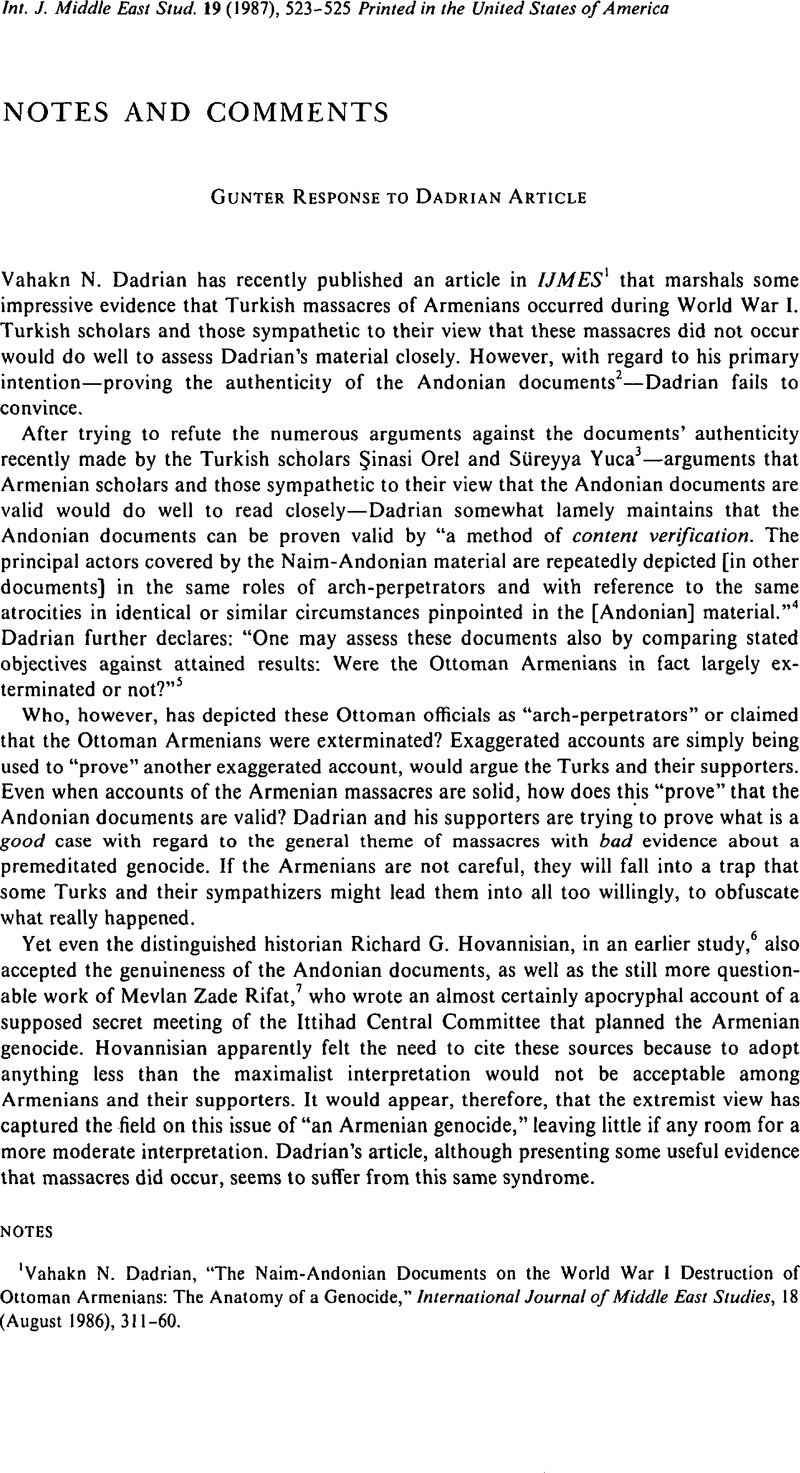No CrossRef data available.
Article contents
Notes and Comments
Gunter Response to Dadrian Article
Published online by Cambridge University Press: 29 January 2009
Abstract

- Type
- Notes and Comments
- Information
- Copyright
- Copyright © Cambridge University Press 1987
References
1 Dadrian, Vahakn N., “The Naim-Andonian Documents on the World War I Destruction of Ottoman Armenians: The Anatomy of a Genocide,” International Journal of Middle East Studies, 18 (08 1986), 311–60.CrossRefGoogle Scholar
2 Andonian, Aram, ed., The Memoirs of Naim Bey: Turkish Official Documents Relating to the Deportations and Massacres of Armenians (London, 1920; reprinted, Newton Square, Penn.: Armenian Historical Research Association, 1964), a collection of documents purporting to be official telegrams sent in code by Talaat Pasha and other Ottoman officials to order “genocide” against the Armenians. These so-called documents first emerged soon after World War I in an apparent attempt by certain Armenian circles to impress favorably the Paris Peace Conference. The Allies evidently recognized them as forgeries even then, for they were not utilized against Ottoman officials accused of war crimes even though they were readily available.Google Scholar
3 Orel, Şinasi and Yuca, Süreyya, The Talat Pasha Telegrams: Historical Fact or Armenian Fiction? (Nicosia, 1986).Google Scholar
4 Dadrian, “Naim-Andonian Documents,” p. 325.Google Scholar
5 Ibid., p. 338. Although there is no doubt that several hundred thousand Ottoman Armenians did die, the Armenians probably exaggerate these numbers. See McCarthy, Justin, Muslims and Minorities: The Population of Ottoman Anatolia and the End of the Empire (New York and London, 1983), p. 130.Google Scholar
6 Hovannisian, Richard G., Armenia on the Road to Independence, 1918 (Berkeley and Los Angeles, 1967), p. 274, n. 47.Google Scholar
7 Rifat, Mevlan Zade, Türkiye inkilabinin ic yüzü [The inner aspects of the Turkish Revolution] (Aleppo, 1929).Google Scholar The French author so sympathetic to the Armenian cause, Yves Ternon, also concluded that Rifat's “document seems apocryphal,” explaining its creation “by the need for Rifat, a Kurd, to discredit the Young Turk and Kemalist regimes in order to facilitate an Armeno-Kurdish rapprochement by lessening the responsibilities of the Kurds in the massacres.” Ternon, Yves, The Armenian Cause (Delmar, N.Y., 1985), p. 243 n. 20.Google Scholar




